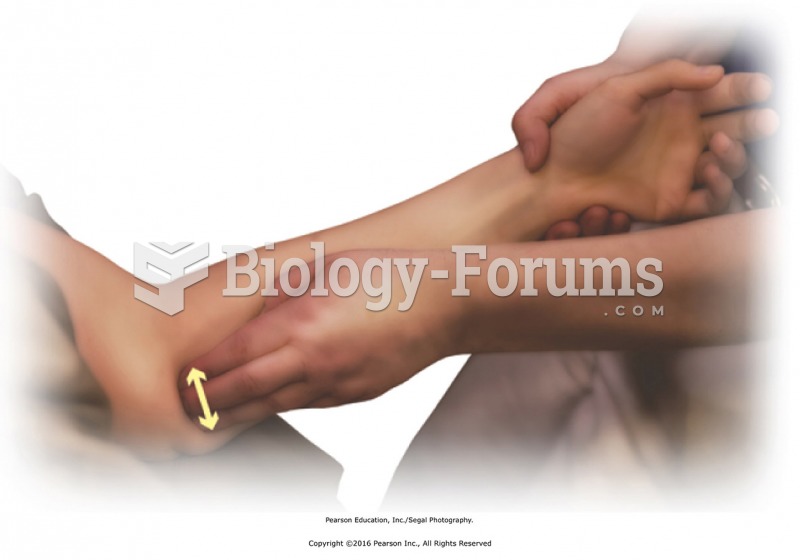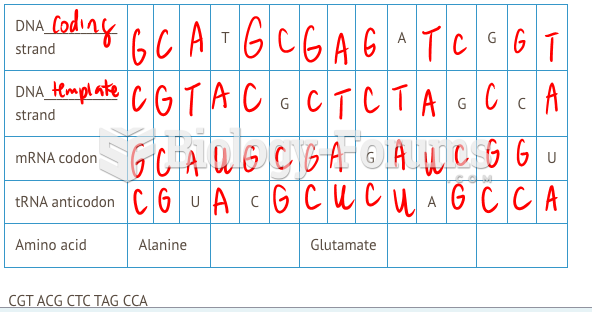If the object distance (s) is less than the focal length (f) then the image is ____________.
Fill in the blank(s) with correct word
Question 2
The two most common types of poor eyesight are the result of improper ______________.
Fill in the blank(s) with correct word
Question 3
In order to see a rainbow, the Sun must be _______________ you
Fill in the blank(s) with correct word
Question 4
The sky is blue because of ____________.
Fill in the blank(s) with correct word
Question 5
The orientation of an image seen projected on a screen by a single lens is always __________.
Fill in the blank(s) with correct word
Question 6
A __________ lens is thinner at the center than the edges.
Fill in the blank(s) with correct word
Question 7
A __________ lens is thicker at the center than the edges.
Fill in the blank(s) with correct word
Question 8
A person looking through eyeglasses sees __________ images.
Fill in the blank(s) with correct word
Question 9
Image height divided by object height gives __________.
Fill in the blank(s) with correct word
Question 10
The type of mirror that will allow you to see large areas normally hidden from your view is __________.
Fill in the blank(s) with correct word
Question 11
The two types of reflection are ______________ and ___________.
Fill in the blank(s) with correct word
Question 12
The ideal shape for the primary mirror of a telescope is __________.
Fill in the blank(s) with correct word
Question 13
A one-way mirror works because __________.
Fill in the blank(s) with correct word
Question 14
The colors you see with a prism result because of __________.
Fill in the blank(s) with correct word
Question 15
__________ results because the speed of light in a transparent medium varies with frequency.
Fill in the blank(s) with correct word
Question 16
When you look into a pool of water, the depth looks less than it actually is because of __________.
Fill in the blank(s) with correct word
Question 17
The critical angle is that angle of incidence for which the angle of refraction equals ______.
Fill in the blank(s) with correct word
Question 18
A light ray bends when it goes from one medium to another because of __________.
Fill in the blank(s) with correct word
Question 19
When myopia is corrected surgically, the shape of the ________ is changed.
Fill in the blank(s) with correct word
Question 20
A ________ lens is used to compensate for hyperopia.
Fill in the blank(s) with correct word
Question 21
You see colors in a rainbow because of __________.
Fill in the blank(s) with correct word
Question 22
Optical fibers work because of __________.
Fill in the blank(s) with correct word
Question 23
Light is totally absorbed when sent through two Polaroid filters if their transmission axes are __________.
Fill in the blank(s) with correct word
Question 24
Certain types of sunglasses are very effective at diminishing light reflected from surfaces because of __________.
Fill in the blank(s) with correct word
Question 25
When light passes through two or more narrow slits, an alternating dark and bright pattern is observed on a screen because of __________.
Fill in the blank(s) with correct word
Question 26
Light spreads out when it passes through a narrow slit because of __________.
Fill in the blank(s) with correct word
Question 27
Liquid crystal displays make use of __________.
Fill in the blank(s) with correct word
Question 28
You do not see your image when you look at a flat rough aluminum surface because of __________.
Fill in the blank(s) with correct word
Question 29
In the case of magnification, if image distance (p) is positive, the image is to the ______ of the lens and ______.
a. right b. left
c. real d. imaginary
e. virtual
Question 30
An image seen projected on a screen by a single lens
a. is always erect.
b. is always inverted.
c. is a real image.
d. is a virtual image.
e. none of the above
Question 31
A lens that is thinner at the center than the edges
a. is a converging lens.
b. is a diverging lens.
c. always forms a real image.
d. always forms a virtual image.
e. none of the above
Question 32
A person looking through eyeglasses sees
a. real images.
b. virtual images.
c. erect images.
d. inverted images.
e. polarized images.
Question 33
If the magnification produced by an optical system is negative, the image is
a. smaller than the object.
b. inverted.
c. upside down.
d. all of the above.
Question 34
The Hubble Space Telescope
a. has a flawed primary mirror.
b. has been repaired.
c. has failed.
d. none of the above
Question 35
You look at yourself in a plane mirror. If you move away from the mirror and look at yourself again, you now see
a. more of yourself.
b. less of yourself.
c. the same amount of yourself.
d. a larger image of yourself.
e. a smaller image of yourself.
Question 36
Fresnel lenses are
a. made of mirror segments.
b. made of the surface portions of a regular lens.
c. found in some auto headlamps and theater lights and rear windows of RVs.
d. all of the above.
Question 37
When light enters glass from air, which of these properties of the light change?
a. frequency b. wavelength
c. speed d. all of the above
Question 38
When a light ray traveling in air meets the surface of a piece of glass, which of the following occur at the interface?
a. The light is totally reflected.
b. Some of the light is reflected back into the air.
c. Some light enters the glass and is refracted toward the normal.
d. Some light enters the glass and is refracted away from the normal.
e. All of the light enters the glass.
Question 39
Halos are most often observed in the ____________ time of the year
a. spring b. summer
c. fall d. winter
Question 40
In an astronomical telescope the secondary mirror is
a. concave. b. convex.
c. spherical. d. plane.
Question 41
The light directly from the Sun is
a. polarized. b. unpolarized.
c. horizontally polarized. d. vertically polarized.
Question 42
The advantage of a convex mirror is that it has a __________ field of view
a. narrow b. linear
c. wide d. open
Question 43
The mirror on the passenger side of modern automobiles is a ___________ mirror
a. convex b. concave
c. plane d. spherical
Question 44
The fact that light can be polarized shows that light is
a. polar. b. monochromatic.
c. an electromagnetic wave. d. a transverse wave.
Question 45
Two otherwise identical light waves arriving at the same point with peak matching valley undergo
a. constructive interference.
b. destructive interference.
c. polarization.
d. none of the above.
Question 46
Of EM waves having these wavelengths, which would be visible?
a. 100 nm
b. 500 nm
c. 1000 nm
d. 1 nm
e. none of the above
Question 47
A nanometer is
a. one thousandth of a meter.
b. one millionth of a meter.
c. one billionth of a meter.
d. one trillionth of a meter.
e. none of the above.
Question 48
A lens that is thicker at the center than the edges
a. is a converging lens.
b. is a diverging lens.
c. always forms a real image.
d. always forms a virtual image.
e. none of the above
Question 49
Image height divided by object height gives
a. image distance.
b. object distance.
c. magnification.
d. real image size.
e. virtual image size.
Question 50
An image formed using a converging lens
a. is always real.
b. is always virtual.
c. can have negative magnification.
d. can never be upright.
Question 51
The type of mirror that will allow you to see large areas normally hidden from your view is
a. concave.
b. convex.
c. plane.
d. half-silvered.
e. Polaroid.
Question 52
The ideal shape for the primary mirror of a telescope is
a. concave circular.
b. convex circular.
c. concave parabolic.
d. convex parabolic.
e. plane.
Question 53
A one-way mirror works because of
a. interference.
b. diffraction.
c. its surfaces being half-silvered.
d. dispersion.
e. polarization.
Question 54
Upon entering a medium in which the speed of light is 1.5 108 m/s from a medium in which the speed of light is 2 108 m/s, an oblique light ray will be _____________ the normal to the interface between the two media.
a. bent away from b. bent toward
c. travel along d. remain undeviated with respect to
Question 55
What makes pink ink pink?
a. refraction b. selective absorption
c. dispersion d. none of the above
Question 56
Diverging light rays from a nearby object (a few focal lengths away from the mirror) strike the surface of a concave mirror. After reflecting from the mirror's surface, the rays will converge at
a. the mirror's focal point.
b. a point beyond the mirror's focal point.
c. a point nearer than the mirror's focal point.
d. none of the above.
Question 57
Parallel light rays from a distant object strike the surface of a concave mirror. After reflecting from the mirror's surface, the rays will converge at
a. the mirror's focal point.
b. a point beyond the mirror's focal point.
c. a point nearer than the mirror's focal point.
d. none of the above.
Question 58
What is meant by the term plane mirror?
a. not an unusual mirror b. a flat mirror
c. a horizontal mirror d. none of the above
Question 59
New telescopes are using adaptive optics.. What is that?
a. using parabolic instead of spherical mirrors
b. using computer image processing to enhance images
c. building mirrors in hexagonal segments
d. continually adjusting the mirror's shape during observations
Question 60
The primary mirror in an astronomical telescope must be a
a. half-silvered mirror.
b. convex mirror.
c. concave mirror.
d. plane mirror.
Question 61
The sky is blue because of
a. interference.
b. diffraction.
c. scattering.
d. dispersion.
e. polarization.
Question 62
Rank the following media in order according to the speed of light in them, from slowest to fastest: vacuum, air, water and glass.
a. air, water, glass, vacuum
b. glass, air, water, vacuum
c. water, glass, air, vacuum
d. glass, water, air, vacuum
e. none of the above
Question 63
You see colors with a prism because of
a. interference.
b. diffraction.
c. specular reflection.
d. dispersion.
e. polarization.
Question 64
The variation of the speed of light in a transparent medium with frequency results in
a. interference.
b. diffraction.
c. dispersion.
d. diffuse reflection.
e. polarization.
Question 65
In air a light source emits a wavelength of 630 nm. Under water the wavelength of this light will be
a. 630 nm.
b. less than 630 nm.
c. more than 630 nm.
d. unpredictable.
Question 66
When you look into a pool of water, the depth looks less than it actually is because of
a. interference.
b. diffraction.
c. specular reflection.
d. refraction.
e. polarization.
Question 67
In optics, what is meant by an interface?
a. optically connecting one computer to another
b. using the image created by one lens as the object for another lens
c. when the crest of one wave lines up with the trough of another wave
d. none of the above
Question 68
A light ray bends when it goes from one medium to another because of
a. interference.
b. diffraction.
c. specular reflection.
d. refraction.
e. polarization.
Question 69
An object is 50 cm in front of a plane mirror. Its image will be located
a. 50 cm in front of the mirror.
b. at the mirror's surface.
c. 50 cm behind the mirror.
d. 25 cm in front of the mirror.
e. 25 cm behind the mirror.
Question 70
Which of the following is not involved in the formation of a rainbow?
a. interference b. dispersion
c. internal reflection d. refraction
Question 71
If you see a rainbow near the time of sunset, where in the sky will the rainbow be?
a. overhead
b. toward the eastern horizon
c. toward the western horizon
d. toward the northern horizon
e. toward the southern horizon
Question 72
You see colors in a rainbow because of
a. interference.
b. diffraction.
c. specular reflection.
d. dispersion.
e. polarization.
Question 73
Optical fibers work because of
a. interference.
b. diffraction.
c. total internal reflection.
d. diffuse reflection.
e. polarization.
Question 74
According to the law of reflection, a light ray striking a mirror at an angle of incidence of 30 degrees will leaves the mirror at an angle of
a. 60 degrees.
b. 30 degrees.
c. less than 30 degrees.
d. none of the above.
Question 75
Certain types of sunglasses are very effective at diminishing light reflected from surfaces because of
a. interference.
b. diffraction.
c. specular reflection.
d. diffuse reflection.
e. polarization.
Question 76
When light passes through two or more narrow slits, an alternating dark and bright pattern is observed on a screen because of
a. interference.
b. diffraction.
c. specular reflection.
d. diffuse reflection.
e. polarization.
Question 77
Thin film interference is responsible for the colors of
a. bird feathers. b. gasoline spills.
c. soap bubbles. d. all of the above.
Question 78
Light spreads out when it passes through a narrow slit because of
a. interference.
b. diffraction.
c. specular reflection.
d. diffuse reflection.
e. polarization.
Question 79
A helium neon laser generates light of 632.8-nm wavelength. What color is that?
a. blue b. yellow
c. red d. green
Question 80
The colors of objects we see by reflected light are due to
a. interference. b. selective absorption.
c. specular reflection. d. diffuse reflection.
Question 81
Why are optical fibers important for communication?
a. They can carry thousands of times the information that wires can.
b. Light goes faster than electricity.
c. They carry digital information. Wires can't carry digital information.
d. all of the above
Question 82
Liquid crystal displays make use of
a. interference.
b. diffraction.
c. specular reflection.
d. diffuse reflection.
e. polarization.
Question 83
What is meant by the normal to a surface?
a. a line perpendicular to the surface at a given point
b. the angle between the surface and the light ray
c. a line parallel to the surface at a given point
d. the direction of a reflected ray
Question 84
You do not see your image when you look at a flat rough aluminum surface because of
a. interference.
b. diffraction.
c. specular reflection.
d. diffuse reflection.
e. polarization.
Question 85
You can see your image in a mirror because of
a. interference.
b. diffraction.
c. specular reflection.
d. diffuse reflection.
e. polarization.
Question 86
In order to see a rainbow, the Sun must be directly in front of you.
a. True
b. False
Indicate whether the statement is true or false
Question 87
The sky is blue due to air molecules scattering sunlight in all directions.
a. True
b. False
Indicate whether the statement is true or false
Question 88
The speed of light in any transparent medium is the same as the speed of light in a vacuum.
a. True
b. False
Indicate whether the statement is true or false
Question 89
LCDs operate on the principle of refraction through glass.
a. True
b. False
Indicate whether the statement is true or false
Question 90
A magnifying glass with focal length 15 cm is placed 10 cm above a stamp. The image of the stamp is located 30 cm above the magnifying glass.
a. True
b. False
Indicate whether the statement is true or false
Question 91
Halos are caused by hexagonal ice crystals in the upper atmosphere.
a. True
b. False
Indicate whether the statement is true or false
Question 92
A converging lens always forms an object's image at the focal point of the lens.
a. True
b. False
Indicate whether the statement is true or false
Question 93
An image seen projected on a screen by a single lens is always inverted.
a. True
b. False
Indicate whether the statement is true or false
Question 94
In the atmosphere, the intensity of scattered sunlight of longer wavelength is greater than that of shorter wavelength.
a. True
b. False
Indicate whether the statement is true or false
Question 95
A diverging lens is thicker at the center than the edges.
a. True
b. False
Indicate whether the statement is true or false
Question 96
A person looking through eyeglasses sees real images.
a. True
b. False
Indicate whether the statement is true or false
Question 97
A convex mirror will allow you to see large areas normally hidden from your view.
a. True
b. False
Indicate whether the statement is true or false
Question 98
The Hubble Space Telescope has been repaired.
a. True
b. False
Indicate whether the statement is true or false
Question 99
Diverging lenses have negative focal lengths.
a. True
b. False
Indicate whether the statement is true or false
Question 100
The ideal shape for the primary mirror of a telescope is concave parabolic.
a. True
b. False
Indicate whether the statement is true or false
Question 101
A curved mirror that produces an enlarged image will also have a greater field of view than a plane mirror.
a. True
b. False
Indicate whether the statement is true or false
Question 102
You look at yourself in a plane mirror. If you move away from the mirror and look at yourself again, you now see more of yourself.
a. True
b. False
Indicate whether the statement is true or false
Question 103
A one-way mirror works because its surfaces are half-silvered.
a. True
b. False
Indicate whether the statement is true or false
Question 104
An EM wave with a wavelength of 500 nm will be visible.
a. True
b. False
Indicate whether the statement is true or false
Question 105
Astigmatism is due to too flat a cornea.
a. True
b. False
Indicate whether the statement is true or false
Question 106
The lens in your eye and the cornea both contribute to image formation.
a. True
b. False
Indicate whether the statement is true or false
Question 107
Your eye's iris changes the size of your pupil to adjust the amount of light that enters your eye.
a. True
b. False
Indicate whether the statement is true or false
Question 108
The colors you see with a prism result because the light is diffracted.
a. True
b. False
Indicate whether the statement is true or false
Question 109
Light goes slower through glass than through air.
a. True
b. False
Indicate whether the statement is true or false
Question 110
Light is a transverse wave.
a. True
b. False
Indicate whether the statement is true or false
Question 111
Dispersion results because the speed of light in a transparent medium varies with frequency.
a. True
b. False
Indicate whether the statement is true or false
Question 112
When you look into a pool of water, the depth looks less than it actually is because the light is dispersed.
a. True
b. False
Indicate whether the statement is true or false
Question 113
The path of a light ray through a refracting surface is reversible.
a. True
b. False
Indicate whether the statement is true or false
Question 114
A light ray can pass through a diverging lens without being deflected.
a. True
b. False
Indicate whether the statement is true or false
Question 115
A light ray bends when it goes from one medium to another because of diffraction.
a. True
b. False
Indicate whether the statement is true or false
Question 116
Blue light travels more slowly through glass than red light does.
a. True
b. False
Indicate whether the statement is true or false
Question 117
You see colors in a rainbow because of diffraction.
a. True
b. False
Indicate whether the statement is true or false
Question 118
Optical fibers work because of dispersion of light.
a. True
b. False
Indicate whether the statement is true or false
Question 119
Certain types of sunglasses are very effective at diminishing light reflected from surfaces because of polarization.
a. True
b. False
Indicate whether the statement is true or false
Question 120
When light passes through two or more narrow slits, an alternating dark and bright pattern is observed on a screen because of interference.
a. True
b. False
Indicate whether the statement is true or false
Question 121
Light spreads out when it passes through a narrow slit because of interference.
a. True
b. False
Indicate whether the statement is true or false
Question 122
Liquid crystal displays make use of interference of light.
a. True
b. False
Indicate whether the statement is true or false
Question 123
You do not see your image when you look at a flat rough aluminum surface because of specular reflection.
a. True
b. False
Indicate whether the statement is true or false
Question 124
You can see your image in a mirror because of diffuse reflection.
a. True
b. False
Indicate whether the statement is true or false
Question 125
What is the temperature (to one decimal place and in degrees K) for radiation that has a maximum wavelength ( max) of 3.5 106 m?







